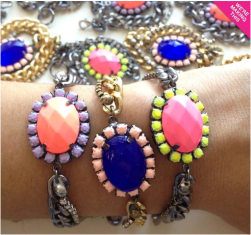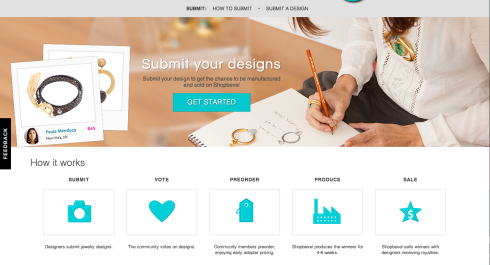“Crowdfunded fashion: so hot right now.Patrick Robinson recently launched his new clothing brand via Kickstarter. Hong Kong startup ZaoZao is making inroads in Asia, introducing online shoppers to the region’s up-and-coming designers. And New York-based Cut on Your Bias is giving users a chance to actually participate in designing the garments its indie label’s create.
Only time will tell whether or not any of these concepts have lasting power. The first round of crowdfunded and crowdsourced fashion—most notably Fashion Stake,launched in 2010 as a crowdfunded site and relaunched as a traditional e-commerce sites under new owners Fab.com in 2011—weren’t so successful. When it came down to it, shoppers didn’t want to design their own clothes, or even vote on designs. Too much work.
However, entrepreneur Courtney McColgan thinks that these days—that is, two years later—customers want a bit of say. Maybe not complete control, but at least some input. That’s why she’s launched Shopbevel, which helps indie jewelry designers get their work shown to thousands of online shoppers. “Designers submit designs, the community votes, and Shopbevel produces selected winners,” the site concisely explains
But what makes McColgan, who has raised $750,000 in seed funding from venture capital firms including Lightbank (run by two Groupon founders) and Great Oaks (early investors in Warby Parker and Bonobos), think it’s going to work this time around? “Jewelry designers are very widespread—and there’s a lot of them,” says the Stanford Business School grad, who counts ex-Threadless chief creative officer Jeffrey Kalmikoff as an advisor.
Indeed, Threadless is a much bigger inspiration for McCoglan than Kickstarter. Every piece produced is under $100, and Shopbevel takes care of the difficult part of the business—producing the product and holding the inventory.The designer receives a 15% royalty on every piece sold—not much, but then again he or she doesn’t have to worry about the backend stuff. Plus, there’s plenty of free marketing and exposure.
That’s not to say production has been easy for McColgan to pull off. “Obviously jewelry is harder than t-shirts,” she says. To figure out the manufacturing side of things, she spends half of her time abroad visiting factories and also scouting for new designers. (It helps that she spent four years before grad school helping to launch a non-profit in China. She took a year off from undergrad just to learn Chinese.)
McColgan has also had a tiny bit of practice. She initially launched Shopbevel under the name Crowd Jewel at the end of 2011 (with a $50,000 investment). Crowd Jewel hosted its first contest in January 2012, attracting 68 designers and 4,500 votes—she sold 20 pieces of jewelry in that first round. Shopbevel is like Crowd Jewel 2.0, just with lots more funding and a much more robust manufacturing program.
Will shoppers bite? Check out Shopbevel.com and let us know what you think.” – Fashionista
